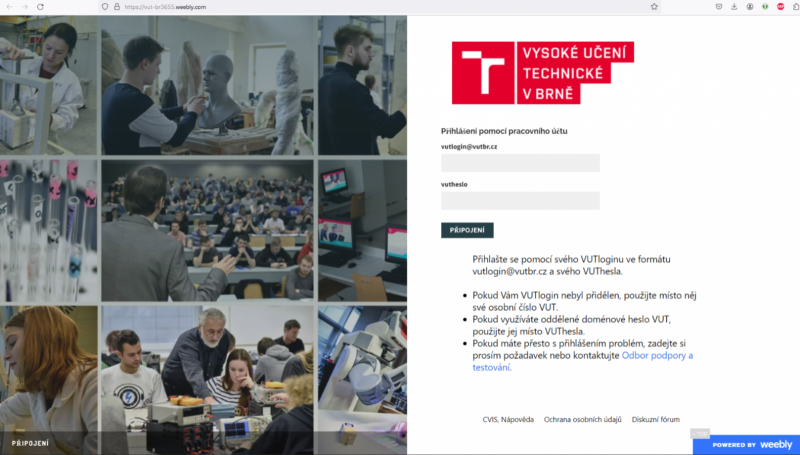BRNO UNIVERSITY OF TECHNOLOGY
Antonínská 548/1, 601 90 Brno
Czech Republic
phone numbers list
e-mail: vut@vutbr.cz
international@vutbr.cz
http://www.vutbr.cz/en



One of the most common forms of online fraud is phishing. Its aim is to obtain confidential data or login details from users. It can appear in your email inbox, on social media or come in the form of a text message. On International Computer Day, Brno University of Technology is urging students and staff to be vigilant and offers guidance on how to respond to phishing (not only) at BUT.
Phishing (a variation of the word fishing) is a technique used by scammers to obtain confidential data from users. It consists of sending emails, private messages on social networks or text messages masked as good deals, threats or notifications from familiar organisations.
Like all of IT, phishing and other forms of online scams are constantly evolving and becoming more sophisticated – phishing is now much more commonly encountered in a targeted form, where the message contains graphic elements of the attacked organisation. The pages to which the scam links are directed are often a faithful copy of an organisation's website.
The attackers' goal is to:
The obtained data often ends up in databases on the so-called dark web, where it is sold by scammers. This is also why it is important not to share passwords between multiple services.
Both desktop and laptop users are vulnerable, as well as users of mobile devices such as smartphones and tablets, where identifying phishing is a little more difficult.
Whenever you receive an unexpected message, whether by email, text message or in private messages on social media, look at it carefully.
The most common signs of phishing include:
The message may also contain strange looking attachments (often in a ZIP file) with unintelligible or generic names. These may harbour computer viruses.
Even with thorough prevention, it can happen that a user gets caught. Attacks are often very sophisticated. That is why it is good to know what to do in such a situation:
Useful information about phishing and how to defend yourself against it in English is available for example at the European Union Agency for Cybersecurity website.
Published: 2024-05-28
Short URL: https://www.vut.cz/en/old/f19528/d258664
BRNO UNIVERSITY OF TECHNOLOGY
Antonínská 548/1, 601 90 Brno
Czech Republic
phone numbers list
e-mail: vut@vutbr.cz
international@vutbr.cz
http://www.vutbr.cz/en


